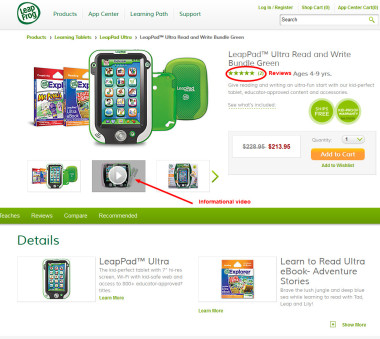Panda, along with all the other updates and changes in the search landscape, makes our jobs as digital marketers tough. Whether you have to answer to your clients or to in-house supervisors, knowing how to get results with your SEO work, while avoiding penalties is enough to cause sleepless nights.
There is doubt Panda has caused waves in the SEO community and online space.
With the continuous changes and the most recent Panda 4.0 update, some digital marketers are scrambling to ensure they are protected. We know thin content, scraped content, and article syndication can be problematic. The bottom line is that quality matters— the quality of our websites and the quality of our content.
That is not new, but has been exemplified with Panda.
Content is not content just for the sake of it and updates over the years have proved that. Content—including the written word—is how we communicate our messages. It’s how we build our brands and give voice to our businesses. It doesn’t matter if you are selling products or services, or simply providing information on the Web, certain fundamentals of content writing have to be used. There have already been many articles written about how to write quality content.
What makes this article any different?
Well, there may be principles you have learned before, but it might be time for a refresher. Or you might learn concepts you hadn’t quite considered. While there is a lot that goes into SEO and web content, such as on-page optimization, natural behavior, intent, etc., the focus here is on the person the content was designed for in the first place.
A study by Content Science in 2012 surveyed 800 Americans and found that as many as 65 percent of them viewed website content as unreliable. This statistic isn’t shocking and surely this perception hasn’t improved much in the last couple of years. A lot has to do with the content source and determining credibility.
Anyone can post content online, which makes it harder to sift through the bad, low quality content to find the good, credible content. Even if you are credible, how you present the message can help or hurt you.
Some of the ways you can boost your credibility is to offer content that is useful to the reader and is free of errors, such as typos, misspellings and incorrect facts. Also, use the appropriate voice in your message and tailor everything to the reader, which leads to the concept of the “you attitude.”
Presenting the Message: It’s All About You, But Not the You That You Think

When I taught writing and communication college courses, I used to preach to my students about implementing what is called the you attitude. I would take it a step further and pose this question often: “When I am communicating with you, what do you care about?” The answer is you.
What people care about the most is themselves. That’s not to say we are always self-centered. Instead, this is a very important communication principle. In essence, the you attitude means keeping the receiver of the message at the forefront of the message. It must be about them, not you or your business or your product or service.
Yes, you will need to eventually describe how your product or service is the solution for the reader, but build to that point. First, show how your message positively affects them. People will won’t respond to your message if it isn’t about them.
Everything you write should take into consideration the needs of the people you are targeting. It’s a simple concept, yet digital marketers miss the mark over and over again. Technology might have changed the speed at which we get our information, but what hasn’t changed is that we are all human.
Incorporating the You Attitude
Writing in such a way produces many great results—from drawing the Web visitor in, to improving conversion. Here are the principles and how to apply the you attitude methodology to your website to create Panda-pleasing content:
Answer the question of “why?”
There is something we all have in common when it comes to receiving a message—which could be in the form of a conversation, presentation, article, advertisement, etc.—we determine how it impacts us personally. You might not even realize you are doing it, but I assure you it is our first inclination. If I start to tell you a story, your mind will immediately begin processing how it might impact you.
For example, will you be entertained? Is there something required of you based on the information you are receiving? In terms of website content, there will also be a lot of questions related to “why.” Why should you listen? Why should you care? Why was this message even created in the first place?
Apply the you attitude method to your written content. Make the message about the readers, which could be describing their concerns, feelings or interests, then explain how your message applies. Continue to address the person reading your message.
If it is a product you are selling, let the visitor know how that product is going to better his or her life in some way. If you have a service offering, explain why it is the solution to a problem.
Learn as much as you can about your target personas.
“The more you know about the people you are communicating with, the easier it will be to concentrate on their needs—which, in turn, will make it easier for them to hear your message, understand it, and respond positively.” (Bovee & Thill 15-16)*.
This quote is from a powerful college communication textbook and it applies directly to web content. In the digital world, we refer to this idea as defining personas. You must learn about your target audience’s biases, education, age, status, style, and personal and professional concerns. You have to be able to define the personas you want to go after, which is going to require rigorous keyword research and some good old fashion marketing tools.
When it comes to keyword research, know the demographics of people searching for those words and phrases. Plenty of keyword research tools will provide this data, including the age and gender of the searchers associated with that particular keyword. In addition, you might want to engage a market research company to help you better understand your audience and define your personas.
That is especially useful in identifying who is coming to your website and whether your message fits. You could even use online surveys to help you recognize certain characteristics and interests of you ideal customers.
You will likely find that there will be more than one persona you are trying to attract, and that is okay. You must write content tailored to each of them. You still want to take that information and use it to write content.
Use the right words (not just talking about keywords).
Out of all the tips listed, this one by far is the simplest. You need to use keywords in your content, otherwise search engines will have no idea what you are about – but that is not what I am talking about here. Replace words such as “we” and “us,” with “you” and “yours.” That transitions your message from being all about your company to being about the reader.
It’s a subtle way of telling people your focus is on them – and not on you or your business.
Engage in audience-centered communication.
Audience-centered communication involves multiple factors. It is the written content that addresses people needs, a user-friendly design that makes it easy to find the information, and an opportunity for people to participate in the conversation.
Plus, there has to be a clear path from the beginning of the message to the desired conclusion, which could be a sale or contact—that part is up to you. Don’t assume the reader knows your intent. Tell him or her what to do – in other words, provide a call to action. This call to action could be to buy your product, call your company or download a free informational guide.
Provide Multiple Formats
Up to this point, these tips have been geared toward written content. However, you need to give multiple options to your Web visitors to consume the information. Use videos and images to portray the message, in addition to written words. Some people learn better from hearing and seeing—give them that chance.
Of course, there is an SEO benefit of using videos and images, so why not do it if you can? Below is one example of how an e-commerce site, Leapfrog.com, gives the shopper various opportunities to learn about the product. Not only is there video, images and a written description, there is also a reviews section where people can give feedback on the product.
 Screenshot taken 6/16/2014 of www.leapfrog.com.
Screenshot taken 6/16/2014 of www.leapfrog.com.
While this set up might not be ideal for every website, it does illustrate how to create audience-centered communication.
Be the Subject Matter Expert to Search Engines & Searchers
One final thought – understand you can’t pick and choose who will and won’t find your content, meaning you can’t decide to create the most amazing content without incorporating important optimization techniques. People need to actually find your content, which means search engines have to know what your pages are about.
Matt Cutts discussed, in one of his many videos, how not using the words on the page as one of the top areas where webmasters make mistakes. He illustrates this point by giving the example of not describing what it is you do or including the words someone would use to search.
Make sure you are not making that error. Pay attention to keyword usage, linear distribution, and Meta tags. Be the subject matter expert to search engines and your audience.
When you create content that incorporates these powerful communication concepts, you should start seeing better conversions, which means you can worry less about Panda. Remember to focus on your readers, because it really should be all about them. It’s part of the secret sauce of amazing content!
*Bovee, Courtland L & Thill, John V. Excellence in Business Communication Ninth Edition. Boston: Prentice Hall, 2011.
Images via shutterstock




